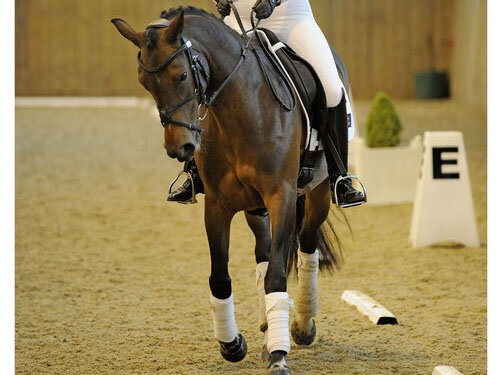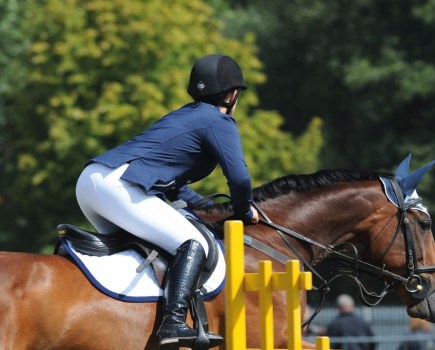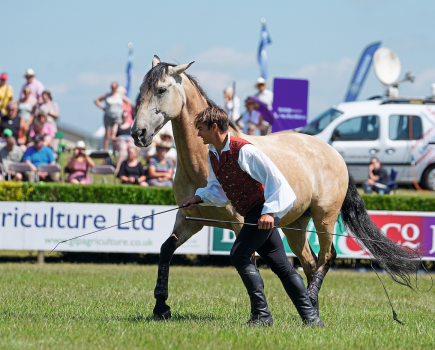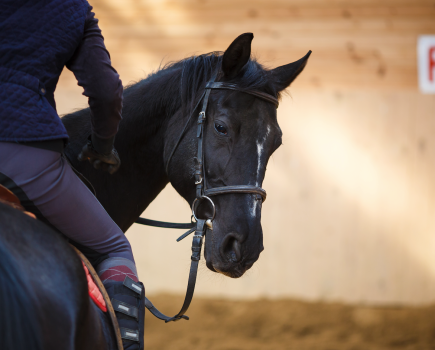Making silly mistakes will cost you and your horse vital marks in a dressage test, whatever level you compete at. Throwing away points for inaccurate riding, cutting corners, ‘square’ circles and failing to prepare for a movement correctly is easily avoided, yet judges see these errors — and more besides — on a regular basis.
Your Horse asked five dressage judges to share their pet hates in the competition arena and we’ve shared them below, to help you improve your marks and score well next time you’re riding a test.
1 Riding poor corners
“Competitors often don’t ride their corners correctly or deep enough,” says British Dressage (BD) List 3A judge John Lassetter. “You should always ride deep into the corner, maintaining your horse’s rhythm and balance. This way it gives you more time to prepare for the next movement, whatever that is.
“I perpetually see riders doing a half circle between H and M, instead of riding a correct corner. They then don’t have time to set the horse up correctly and so maybe overshoot the centre line, or make another mistake.
“Watch the Anky van Grunsvens of this world and see how they ride a corner – that’s how it should be done.”
2 Rider position
“Poor rider position is another of my gripes when I’m judging,” adds John. “So often you see riders who look as though they’re on a motorbike rather than a horse – leaning in around the corners in a wall-of-death style.
“Riders should always aim to keep their upper body level with the shoulders and hips of their horse, so that he or she can stay in an upright mode.”
3 Going too fast
Sonia Berry, a BD List 6 judge who rides at Grand Prix level, would like to see competitors take their feet off the accelerator during a test.
“My pet hate is riders going too fast, thinking that speed equates to energy,” she says. “They’re told their horse should come through from behind but mistake this for speed and start rushing everywhere at 90 miles an hour.”
4 Playing with the contact
“Another bugbear is riders fiddling with the bit,” continues Sonia. “I hate to see lots of movement through the hands, and there seems to be a trend for this. However, on a positive note, I have to say the level of dressage tests in horse trials has improved no end in the past couple of years.
“I’ve judged classes where horses have bucked, pranced and even left the arena during their test, but I now find the standard much higher, with horses going more confidently – so the riders and trainers are doing something right.”
5 Not preparing for a movement
“Certain dressage tests often throw up a mistake that’s repeated or poorly ridden time and time again,” states Elizabeth Roberts, a BD trainee judge.
“One of the things I always look out for is how riders prepare for transitions or turns. At the lower levels, it’s common to see a surprised expression on a horse’s face when the rider suddenly either makes a sharp turn or a ‘trot now/canter now’ aid, rather than the ‘prepare, give an indication to the horse that something might be happening’ (half-halt) and then the aid.
“Sometimes you see a horse looking rather shocked as he or she is surprised into the transition.”
6 Lack of preparation
“My pet hate is those riders who throw marks away through lack of preparation,” says Alison Woulds, a BD List 5 judge who rides at Grand Prix level. “A common example is when they’re asked to ride down the centre line but they don’t actually go on the centre line, instead they overshoot it. Or they attempt to ride a 15- or 20-metre circle and it isn’t accurate.
“If you’ve got 25 competitors in a class you’ll always see the odd one or two who haven’t prepared well enough. I feel like shouting at them: ‘You could have won if you’d only trained harder and spent more time preparing for this test!’”
Alison also has pet-hate when it comes to turnout.
“Most of the horses and riders I judge are turned out well, but there is one thing I hate to see and that’s riders with long hair in a pony tail instead of in a hairnet or bun — it really annoys me!”
7 Incorrect outline
“The most common problem I see when I’m judging is people riding their horses over-bent,” says BD List 6 judge Claire Lilley. “They’re obviously confused about what’s right and what’s wrong with regards to their horse’s outline, and I regularly see horses with their chin on their chest, but their back end trailing behind.
“I think a large number of riders obviously aren’t being taught the correct way to ride into a contact, but on the Continent it’s common for advanced-level judges to judge at the lower levels, because they appreciate how important it is to get the basics right from the very start.
“Above all, riders need to think of their horse as a whole and learn how to hold a contact,” continues Claire. “Of course, anyone can have a momentary slip where their horse loses the contact, but your aim should be to have your horse on the bit, while holding an even contact.
“If I see someone riding their horse over-bent I will say something. If they’re riding a couple of horses in the same competition and don’t take heed of my comments, then I’ll start getting tough on their marks. I’ve been known to get out of the judge’s car before now and go up to a rider to make my point.”
8 Being inaccurate
“Another gripe of mine is carelessness,” adds Claire. “Accuracy is important in a horse’s training, and if you don’t ride each movement accurately then your horse isn’t going to develop the correct degree of suppleness and flexibility.
“A tatty test is due to rider error and often it’s down to little mistakes that could be corrected with good training – leaving the rider in the placings as opposed to way down the leaderboard.
“Whenever I’m judging I want to see riders riding between the movements, as well as riding the actual movements. Above all, they need to understand each movement in a test and ride each as correctly as possible, with suppleness and flexibility.”
Made a mistake? Forget it and move on…
Chances are you’ve committed one or two of the sins our judges have mentioned here, but take heart because even experienced riders can (and do) get it wrong.
“I always halt too early,” confesses Grand Prix dressage rider Beverley Brightman. “I think it’s because I’m anxious to get the first bit of the test right, so I concentrate hard, but then the horse starts to anticipate what’s next, maybe aren’t as in front of the leg as they should be, and halt too early.
“Then I think: ‘Ooh, I’d better salvage this and make it look as though I wanted to halt, even though I didn’t’.”
Whatever level you ride at, just aim to ride at your best. If you look great, ride correctly and enjoy each class, the judges will be watching – and hopefully smiling – as they write up your test sheet.
In case you were wondering…
Affiliated dressage judges are listed according to the level of classes they’re qualified to judge. British Dressage List 1 judges can judge tests of all levels, up to Grand Prix. At the lowest level – List 6 – they’re qualified to judge Preliminary classes, with varying levels in between.









